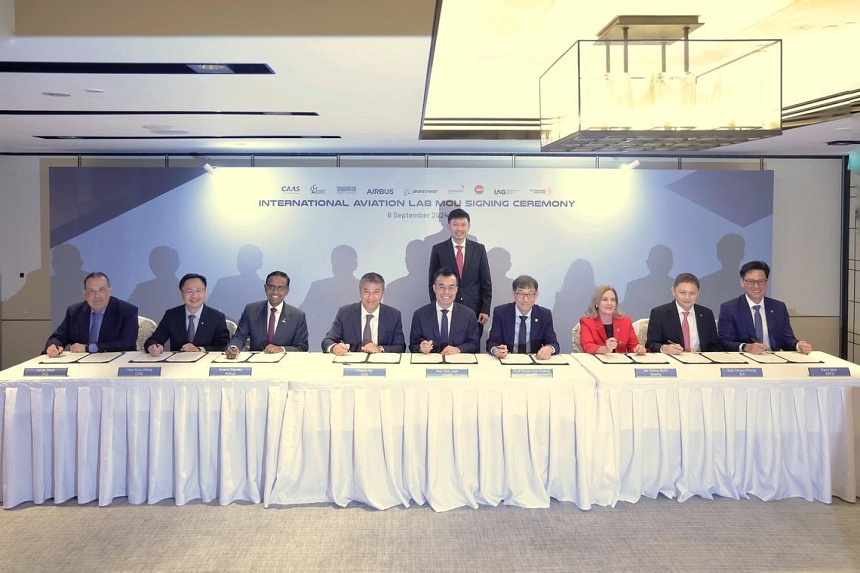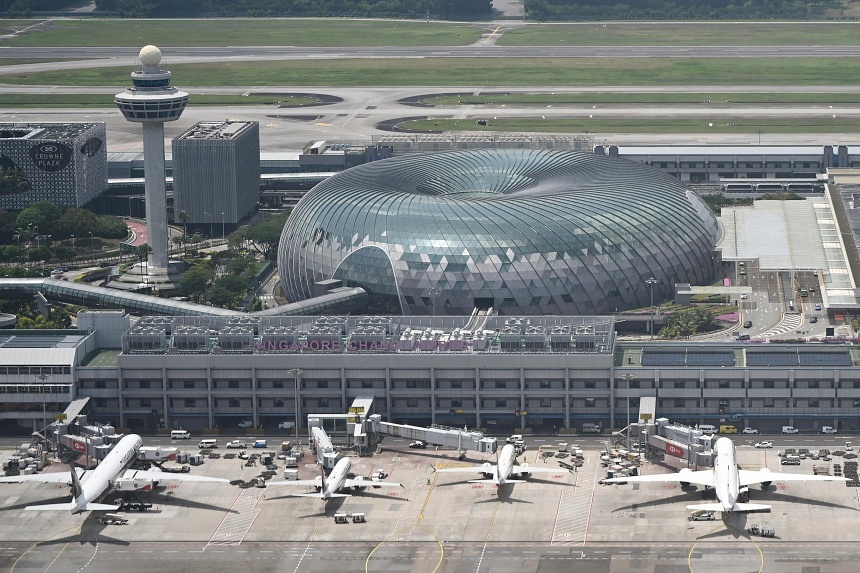SINGAPORE - The back-breaking work of unloading baggage from narrow-body aircraft like the Airbus A320 and Boeing 737 may soon be a thing of the past, with a new aviation innovation lab being set up in Singapore to tackle operational challenges faced by airports all over the world.
Among the new International Aviation Lab’s potential projects is the roll-out of robotics systems that can help to stack and load cargo in the belly holds of smaller aircraft, reducing the physical strain on workers.
Other possible projects include automating labour-intensive airport processes like the pushback and towing of planes, and the opening and closing of aircraft doors at arrival gates, which is done manually by ground agents.
Touted as the first of its kind, the new lab is the brainchild of the Civil Aviation Authority of Singapore (CAAS).
In a tie-up spanning the breadth of the aviation sector, the lab’s founding partners will include aircraft manufacturers Airbus and Boeing, airport operator Changi Airport Group, ground handler Sats, national carrier Singapore Airlines, European airline conglomerate International Airlines Group, which owns British Airways, and the Singapore University of Technology and Design (SUTD).
On Sept 6, the parties signed an agreement to support the setting up of the lab over the next two years.
CAAS said this support will include establishing joint research programmes, sharing resources and exchanging knowledge.
The authority is also looking at a physical site for the lab in Singapore, though this is still in exploratory phase.
In the coming months, industry workshops will be organised to come up with potential projects that the new lab will work on, CAAS added. These projects will then be tested in Singapore, with the aim of eventually deploying them globally.
The target is to initiate the lab’s first batch of projects in the first half of 2025.
CAAS said the international tie-up will help to drive airport transformation “end to end”.
For example, with the participation of Airbus and Boeing, potential innovations could include improvements to aircraft design, which can then be standardised across aircraft types, so it will be easier for airlines and ground handlers to automate certain processes.
CAAS said it will appoint the International Centre for Aviation Innovation (ICAI) to oversee the overall planning and execution of the lab’s programmes.
The ICAI, which was launched in January, is a broader CAAS initiative to research ways to improve the efficiency of the aviation sector in the Asia-Pacific region.
“To realise the sector’s potential and meet growing demand, airports around the world will need to reassess airport operations,” CAAS said on Sept 6.
“Many (airports) will need to better leverage technology and innovation, to overcome capacity and manpower constraints,” it added.
CAAS director-general Han Kok Juan said the authority will work on growing the new lab, by adding more airlines and airports to the partnership.
It will also bring in other partners in future who may have specific technology or know-how, and this will include a significant number of small and medium-sized firms.

ICAI chief executive Patrick Ky, who was formerly the head of Europe’s civil aviation safety agency, said what makes the International Aviation Lab unique from other airport labs is its blend of international and local partners, as well as the participation of the two aircraft manufacturers. He said success for the lab is getting the various international partners to work together, which is not always an easy task, and for the solutions developed to be used in actual airport operations.
“If we really want to make a difference... we need to make sure that the solutions which we develop have an international business case. That means the solutions for Changi are solutions which can perform as well for Charles de Gaulle, JFK, Narita and so on,” he added, referring to airports in Paris, New York and Tokyo.
Among the projects that the lab is looking to initiate, the one related to aircraft ramp operations may yield the biggest productivity gains.
Mr Ky said ramp operations for a Boeing 737, for instance, require about 20 to 30 workers. The aim is to reduce this by 10, not by replacing workers, but by using robots to complement them.
Mr Han said there is tremendous potential to develop solutions that make better use of space and manpower, and reduce emissions. He cited Terminal 5, construction of which will start in the first half of 2025.
“For us to fully realise the potential of Terminal 5, we want to look at how we can transform our airport processes... because we will not be able to increase manpower correspondingly.”
Sats president and CEO Kerry Mok raised a similar point.
“As the South-east Asian economy grows and people have a higher standard of living, those are jobs that will not stay for long... We are faced with a shortage of manpower as aviation continues to grow. We have no choice but to innovate,” he said.
SUTD president Phoon Kok Kwang said the jobs the lab is looking to automate are either dirty, dangerous or difficult, adding that the biggest challenge, in his view, is making sure the automations and robotics add to the passenger and staff experience.
“Ultimately, that is all that counts. Not your expensive robots or your beautiful tech.”


